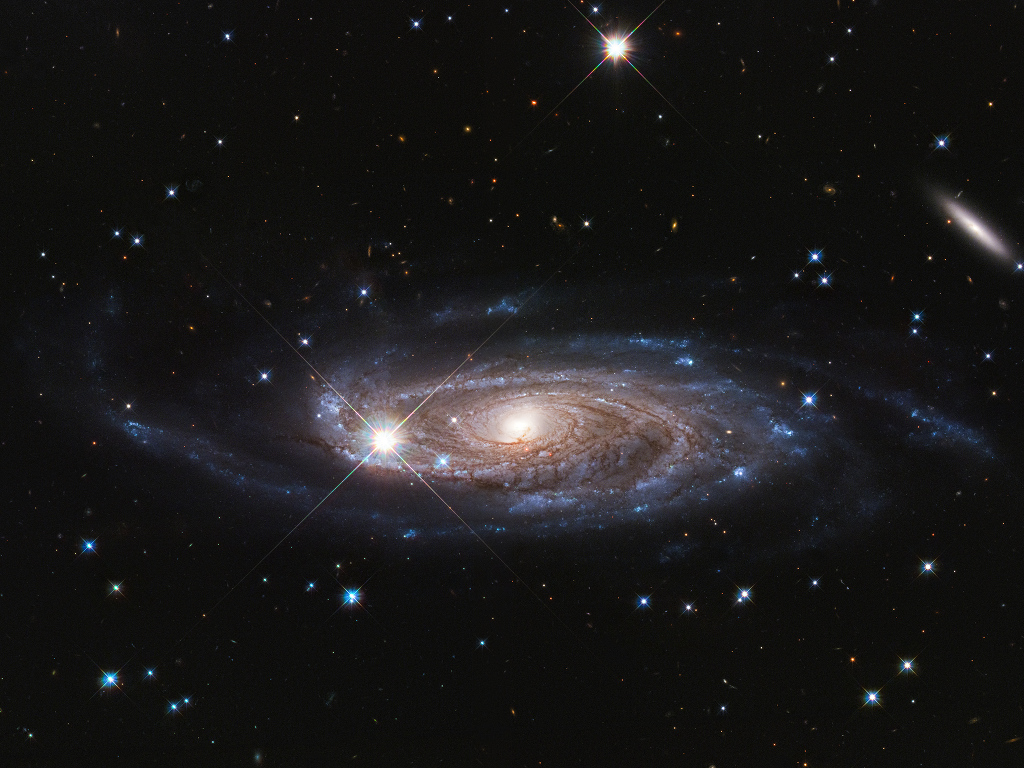2021年9月18日
Rubin’s Galaxy
Image Credit: NASA, ESA, B. Holwerda (University of Louisville)
Explanation: In this Hubble Space Telescope image the bright, spiky stars lie in the foreground toward the heroic northern constellation Perseus and well within our own Milky Way galaxy. In sharp focus beyond is UGC 2885, a giant spiral galaxy about 232 million light-years distant. Some 800,000 light-years across compared to the Milky Way’s diameter of 100,000 light-years or so, it has around 1 trillion stars. That’s about 10 times as many stars as the Milky Way. Part of an investigation to understand how galaxies can grow to such enormous sizes, UGC 2885 was also part of An Interesting Voyage and astronomer Vera Rubin’s pioneering study of the rotation of spiral galaxies. Her work was the first to convincingly demonstrate the dominating presence of dark matter in our universe.
Tomorrow’s picture: equinox on Saturn
鲁宾的星系
影像提供: NASA, ESA, B. Holwerda (University of Louisville)
说明: 在这幅清晰的哈伯太空望远镜影像里,明亮带芒的天体,是位在英仙座方向,近在我们银河系之内的前景恒星。影像所聚焦的后方天体则是UGC 2885,一个距离我们约2亿3千2百万光年远的庞大螺旋星系。跨幅约800,000光年的这个星系,除了远大于直径约100,000光年的银河系之外,更拥有1兆颗左右的成员星,约莫是银河星数的10倍。目前针对这个天体的研究,部分的重点在于了解为何星系可以长得这么庞大。此外,当年天文学家薇拉.鲁宾(Vera Rubin)进行螺旋星系的旋转运动之先驱研究时,UGC 2885是她量测过的星系之一。她的工作,为宇宙含有大量暗物质的提供了首个可让人信服的证据。
明日的图片: equinox on Saturn’s







